
Hypocycloid Curve
Morphing

Spiral Curve along a Circle
By using the Function and the Point Polar component a spiral along a given 3D curve can be generated. The grasshopper file needs to have at least two numeric controllers for number of segments and total number of rotations. Also, the sampling points from the given curve for constructing the spiral should be evenly distributed. By adding another set of parameters this curve can be modified.
The concept of this modeling is related to landscape furniture design.

Rose Curves Modeling
By using the equation for the rose curve and the Function component with three input variables (x,y,z) a series of 2D and 3D Rose curves can be derived.
The following equation is used for constructing points on the rose curve and is based on polar coordinate system, where a point is defined by 𝑃(𝛾, 𝜃).
Equation for Rose Curve Point : 𝛾 = sin (𝜅𝜃) (𝜅 =𝑛 /𝑑)
Based on Rose Curve modeling, a turing tower can be modeled in grasshopper. And in accordance with different amounts for n and d , different forms for tower can be generated.
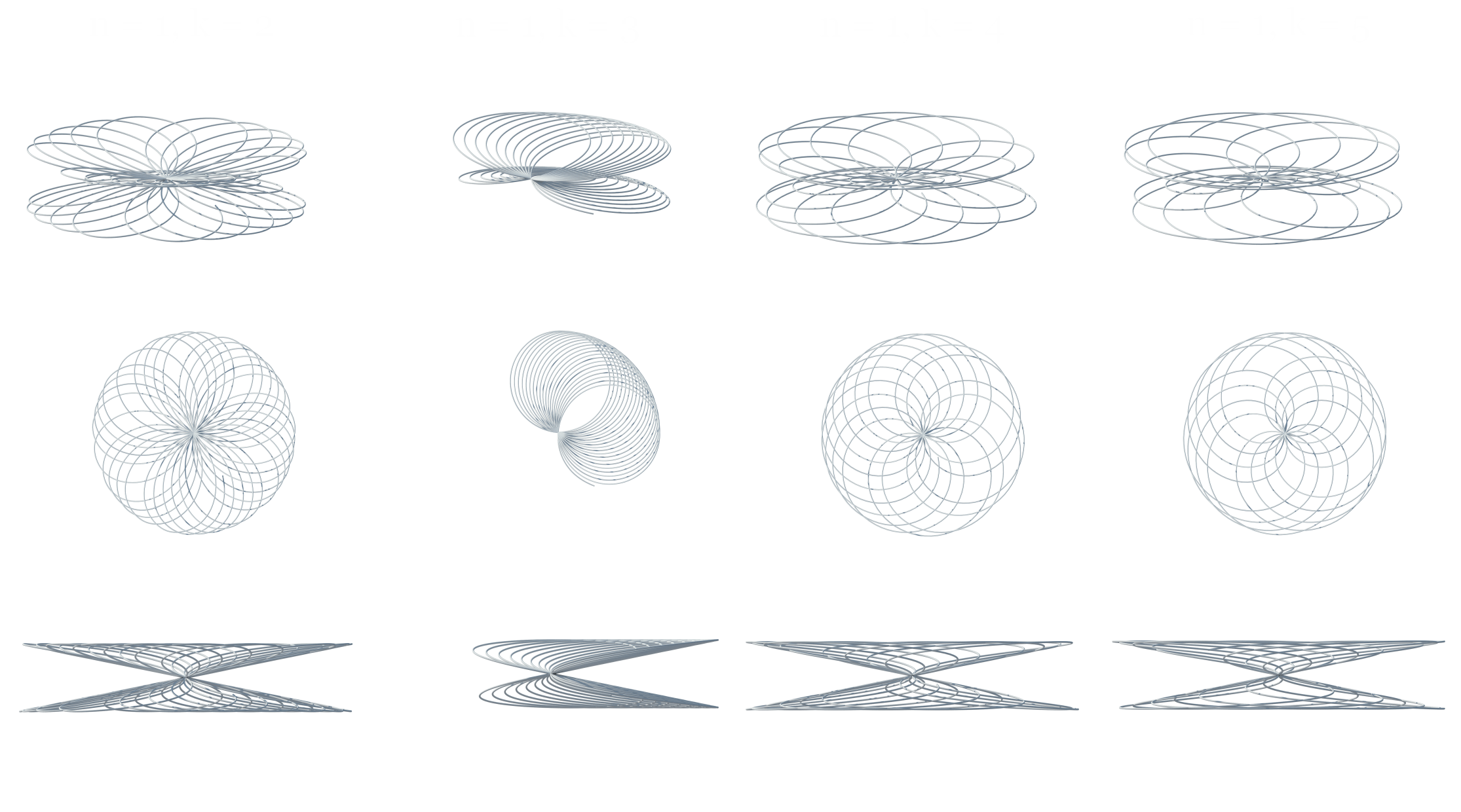
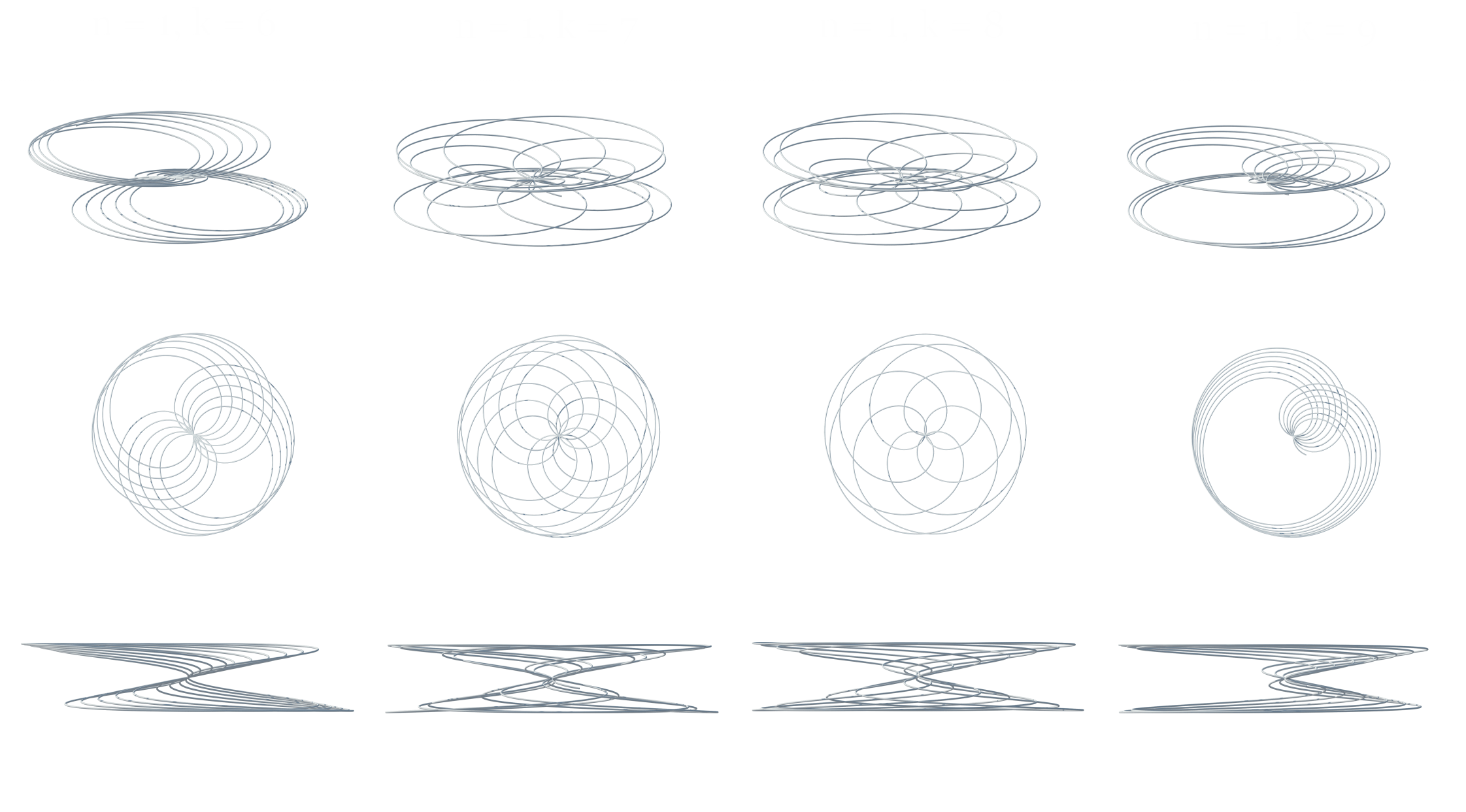
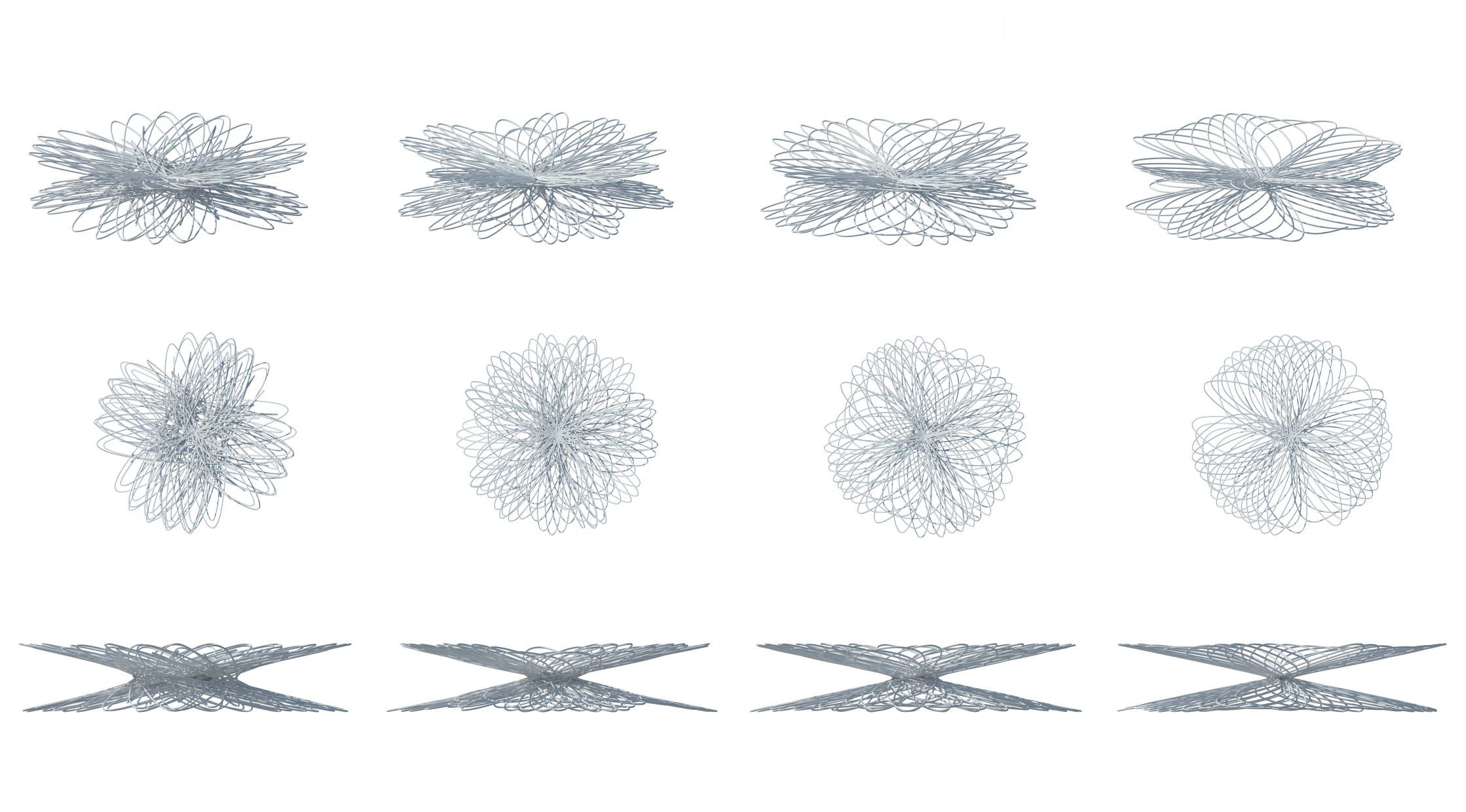
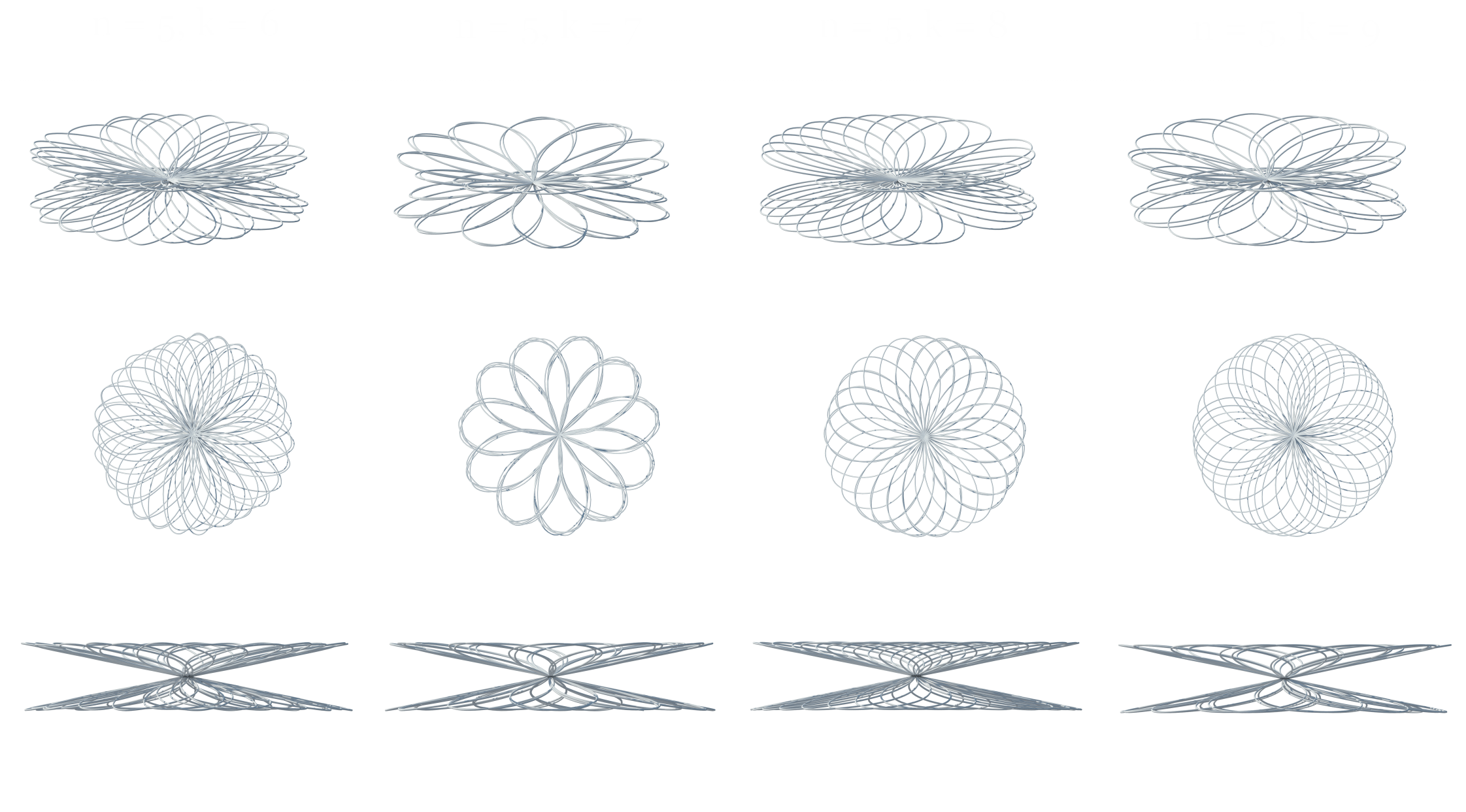

Remapping HexGrid Surface
By starting from a basic HexGrid component in grasshopper, a hexagonal pattern on any given surface will be created. We should construct the parametric relationship for the hexagonal pattern by examining the HexGrid component. We could then reuse this relationship to generated the hexagonal grid on any untrimmed surface. The relationship should be parametric both ways. If the original hexagonal pattern be changed, then the mapped pattern on the surface should be updated accordingly. If the surface be deformed, then the mapping of the hexagonal pattern should be adjusted. This parametric relationship expresses how a hexagonal pattern can be generated on a surface by specifying the underlying UV parameters.

Experimenting with Mobious Strip
A Mobius strip is an example of moving a line segment ‘g’ along a circle ’ c’. As moving the line segment ‘g’ along ‘c’, ‘g’ is continuously rotated around ‘c’ and remain orthogonal to the same intersecting point . When ‘g’ returns to the starting position it should turn the rotation angle, u = p
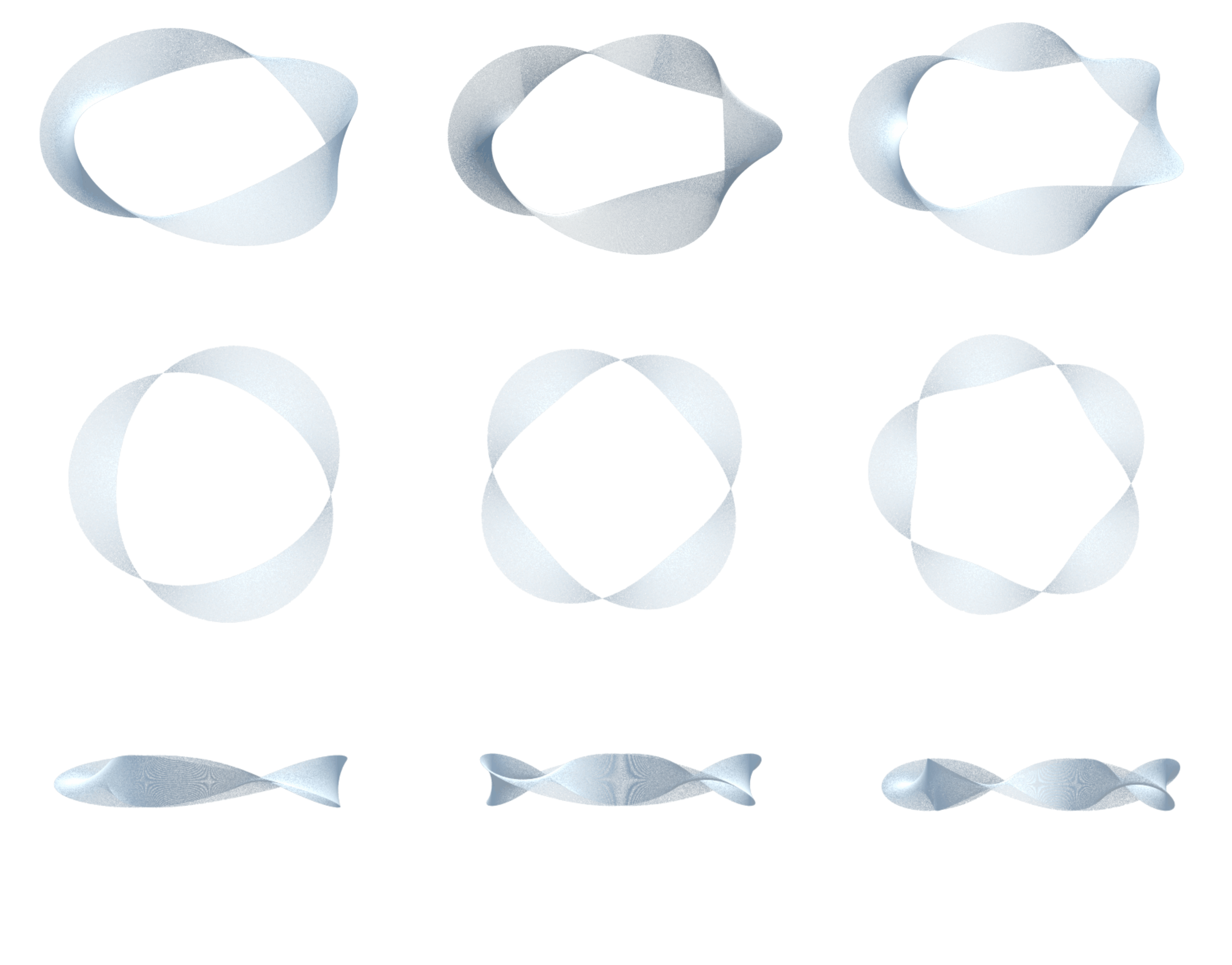


Self - Intersecting Mobius Strip
For every point on this Mobius Strip surface:
X = sin(2*u)*(-‐2+v*sin(u/2))
Y = cos(2*u)*(-‐2+v*sin(u/2))
Z = v*cos(u/2)where0
(0<u<2π, ‐1<v<1)
Based on simple Mobius strip definition, Function components with Surface from Points component are combined to generate the surface. In next step an unrolled strip is created, which has the same length of the Mobius strip. The radius for these trimmed openings, circles, has a ratio to the length of this strip:
r = (length / numofOpenings) / c
where c is the control factor that changes the size of the openings
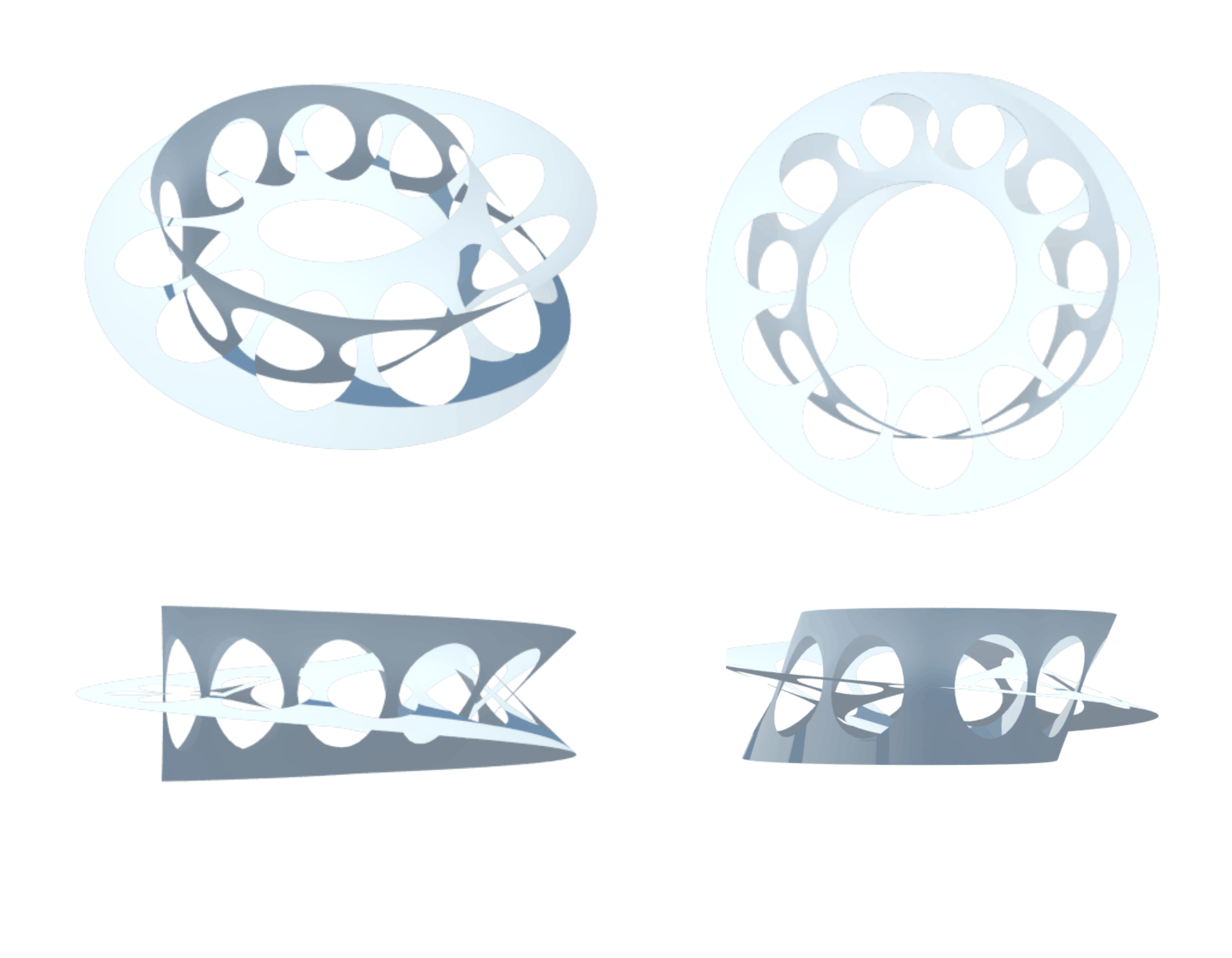
Mesh Refinement via Edge Midpoint Insertion
Instead of using the mesh component directly, 4Point Surface component is used for this exercise. Each 4Point Surface is treated as a quadrilateral mesh, which consists of 4 vertices {A, B, C, D}. Given any free‐form surface from Rhino (or initiated in Grasshopper), the first step is to decompose the surface into a number of sub- surfaces.
The second step is then to insert edge midpoints of each face and connect these new points to create the central quads. The final step is to fill the gaps between these new quads. The final refinement output yields diamond‐like (diagrid) configuration.
Parametric Pavilion
The objective of this exercise is to generate a parametric pavilion in order to experiment with surface tessellations.
3D Diamond Box Morphing
Twisted Box component rather than surface boxes in this problem for box morphing has been used. The Twisted Box is a component that allows you to create a reference (or target) box from scratch by Specifying eight vertices of the box. In this problem, you are asked to create the diamond boxes and use them for the surface tessellation with potential panel modules.




Responsive Component – Parametric Façade
A responsive surface that will respond to the input stimulus is created. For example, the sun position can be treated as the input parameter. Here, a parametric façade is designed which consists of number of surface components and they will respond to the change of the attracting resources respectively.







Surface Subdivision by Single / Multiple attractors
We can modify a two dimensional domain, defined by {{u0,u1},{v0,v1}}, to generate the customized grid pattern for surface subdivision. By utilizing the Graph component to vary the density of the grid pattern successfully.
Here, attractors are introduced as references to drive the surface subdivision pattern.
download .gh file








PARAMETRIC MODELING
These examples are done in
"Parametric Modeling" Course,
Special Thanks to Professor Ramesh Krishnamurti
Fall 2012